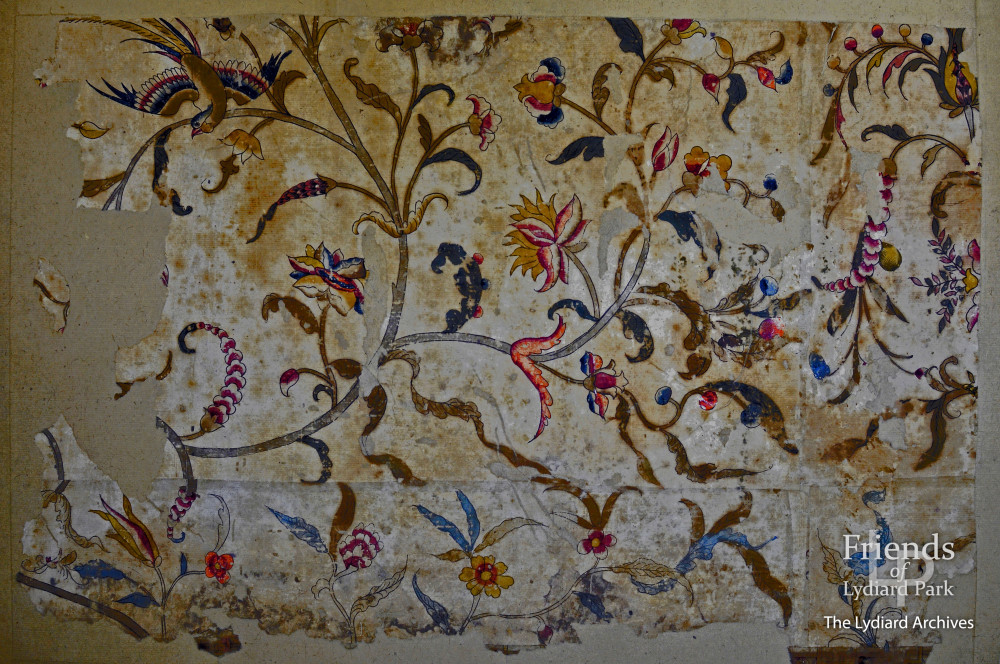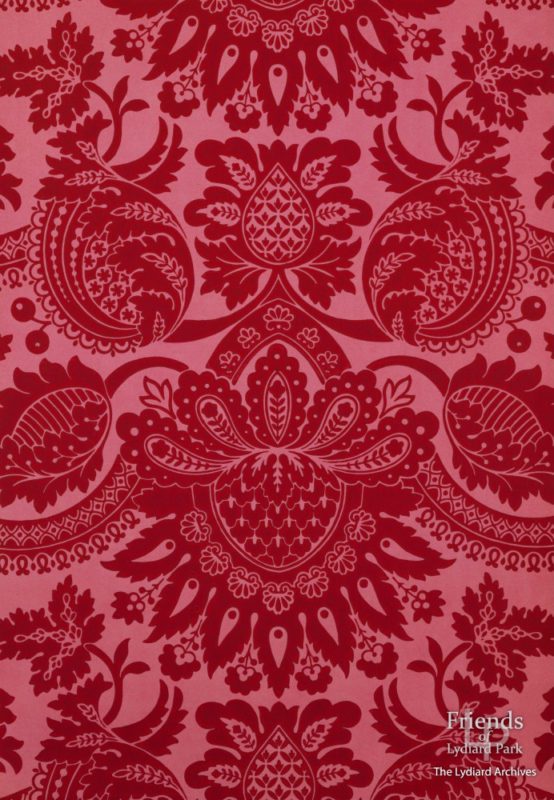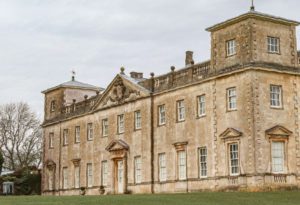Historic Wallpapers
When Lydiard House was decorated in 1982 a piece of hand-painted wallpaper was discovered beneath the dado rail in the Drawing Room. Dating from the 18th century and in the Chinese style, it pre-dated the crimson flock wallpaper we see today.
!8th century Chinese wallpaper was very expensive. It first appeared in London in the late 17th century as a part of the trade in Chinese goods such as china and silks. The Chinese did not use wallpaper themselves and all their products were exported to suit the western market. Unlike European wallpapers, which had originated in the sixteenth century as printed patterns, Chinese papers were painted and each set individually composed. Popular designs included scenes from Chinese life or landscapes, exotic plants and birds, such as we can see in the Lydiard design.
In its turn the crimson flock wallpaper found in the Drawing Room and State Bedroom dates from 1824 and is one of the earliest known examples of flock wallpaper in England. This picture shows the richness of the original colour (created from cochineal) which faded over the years. Most flock patterns imitated the appearance of velvet or silk damask material and were copied from textiles. They were made with powdered wool, which was a by-product of the woollen industry. This wool powder was shaken over a fabric that had been prepared with the design print in varnish or glue, and it formed a thick pile that stuck to the design. Flock papers also had the added advantage of repelling moths due to turpentine used in the adhesive! They became both fashionable and popular.
In 1982 Roy Webb re-papered parts of the Drawing Room and State Bedroom with specially made replica wallpaper, costing £120 a roll. This replaced the worst worn areas of the original hand-blocked paper. Fortunately the original blocks for the pattern were found in the Islington factory of Cole & Sons Ltd of London. The pomegranate pattern was first identified at Temple Newsam House, Leeds, where it was hung in 1824. It was thought that the Lydiard paper was also hung at this time, part of a scheme to smarten up the house for letting, following the death of the 3rd Viscount Bolingbroke.


